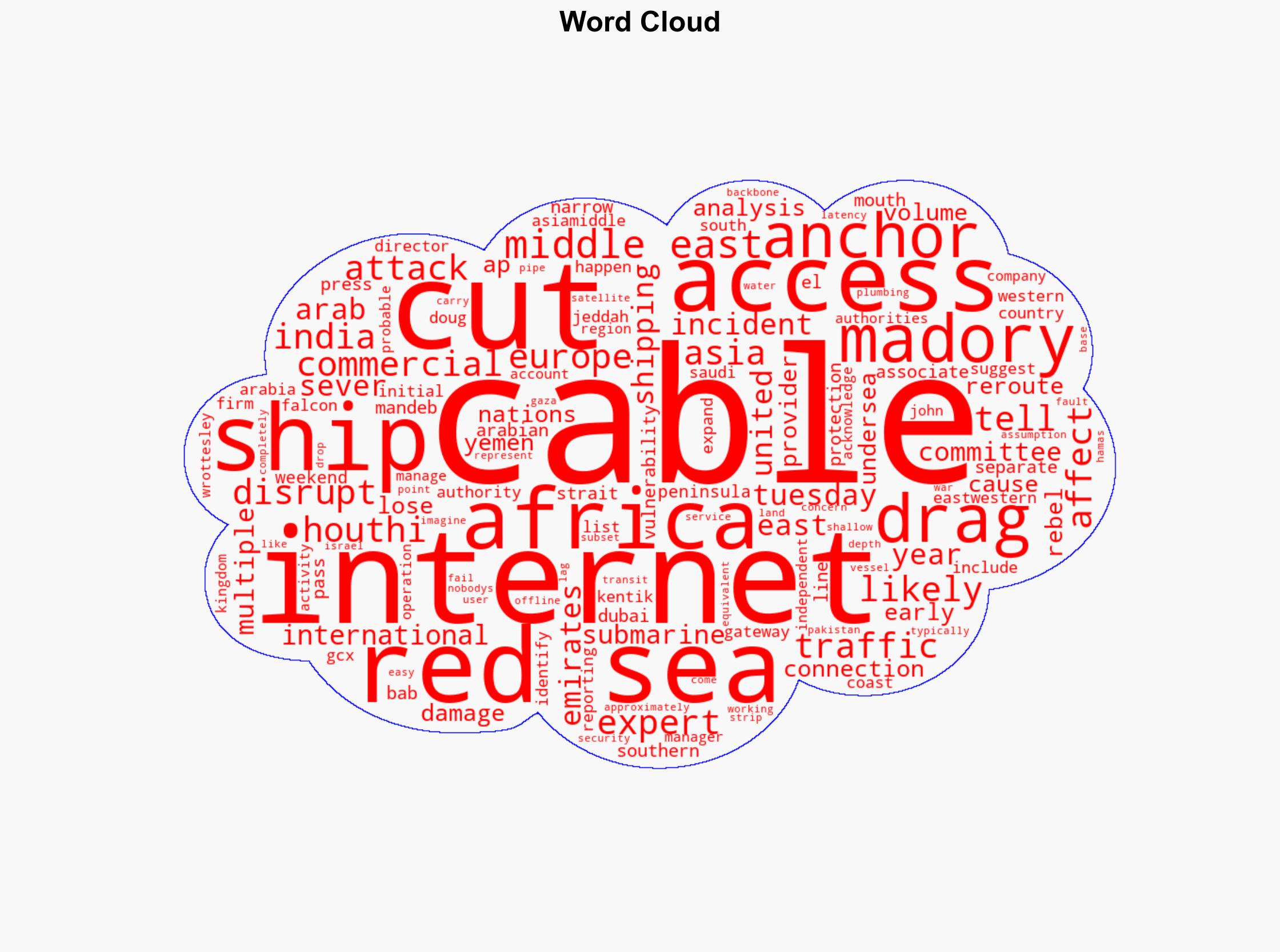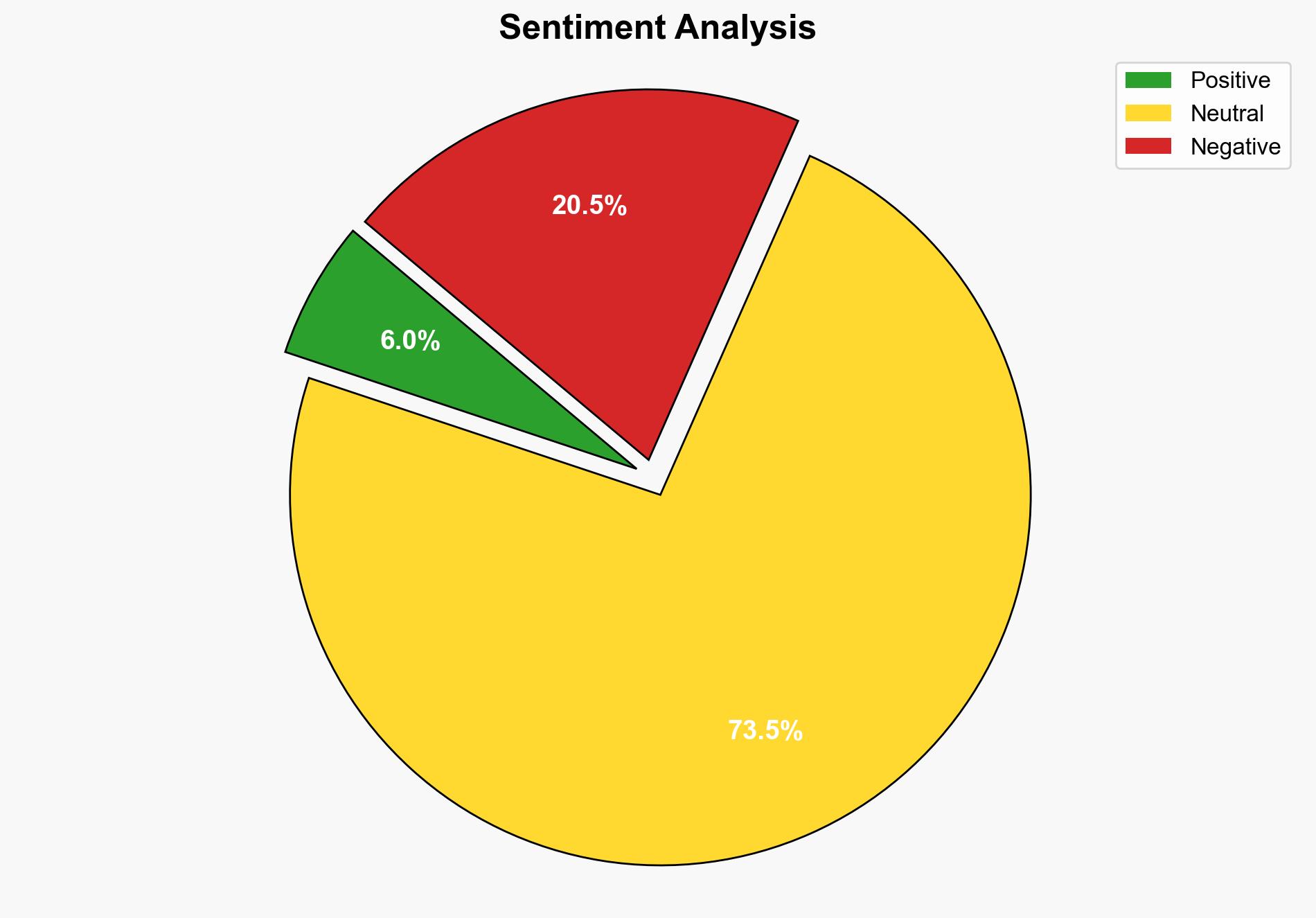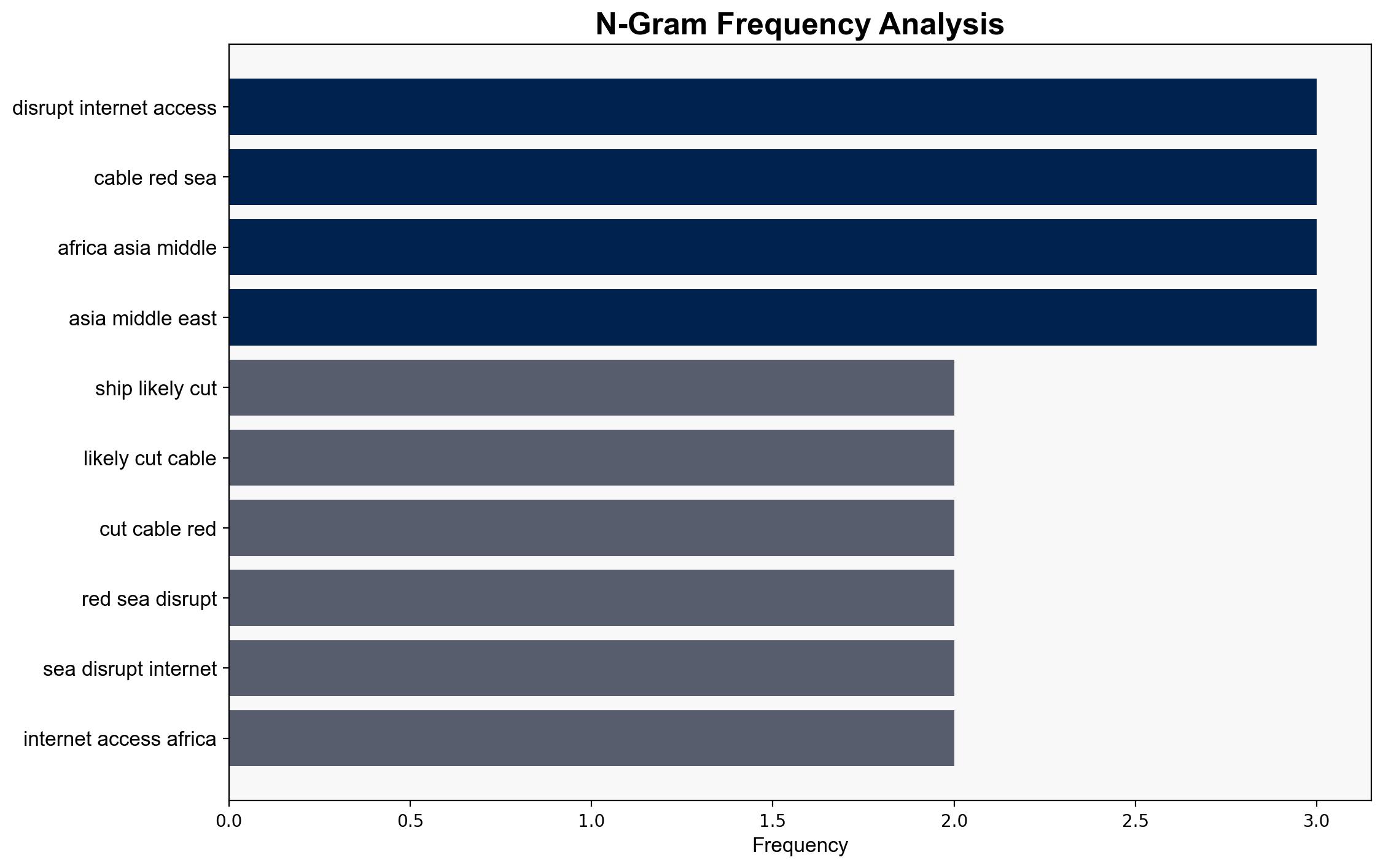Commercial shipping likely cut Red Sea cables that disrupted internet access experts say – ABC News
Published on: 2025-09-09
Intelligence Report: Commercial shipping likely cut Red Sea cables that disrupted internet access experts say – ABC News
1. BLUF (Bottom Line Up Front)
The most supported hypothesis is that commercial shipping activities, specifically anchor dragging, caused the disruption of undersea cables in the Red Sea. This assessment is made with a moderate confidence level due to the recurring nature of such incidents and expert analysis. It is recommended to enhance monitoring and regulation of maritime activities in critical undersea cable areas to prevent future disruptions.
2. Competing Hypotheses
1. **Hypothesis 1**: The disruption was caused by commercial shipping activities, specifically anchor dragging, which is a common cause of undersea cable damage.
2. **Hypothesis 2**: The disruption was a deliberate act by non-state actors, such as the Houthis, as part of a broader geopolitical strategy.
Using the Analysis of Competing Hypotheses (ACH) 2.0, Hypothesis 1 is better supported by the frequency of similar incidents and expert testimony. Hypothesis 2 lacks direct evidence and is primarily based on circumstantial geopolitical tensions.
3. Key Assumptions and Red Flags
– **Assumptions**: It is assumed that commercial shipping activities are the primary cause of undersea cable damage due to historical data. It is also assumed that non-state actors have the capability and intent to target such infrastructure.
– **Red Flags**: The lack of acknowledgment from Saudi authorities and the absence of direct evidence linking non-state actors to the incident.
– **Blind Spots**: Potential underreporting of deliberate sabotage due to political sensitivities.
4. Implications and Strategic Risks
The disruption of undersea cables poses significant risks to regional internet connectivity, impacting economic activities and potentially escalating geopolitical tensions. The incident highlights vulnerabilities in critical infrastructure that could be exploited by hostile entities. There is a risk of cascading effects on global internet traffic if such disruptions become more frequent.
5. Recommendations and Outlook
- Enhance maritime monitoring and regulation in critical undersea cable areas to prevent accidental damage.
- Strengthen international cooperation on cybersecurity and infrastructure protection to mitigate risks from non-state actors.
- Scenario Projections:
- **Best Case**: Improved maritime regulations prevent future incidents, maintaining stable internet connectivity.
- **Worst Case**: Increased frequency of disruptions leads to significant economic and geopolitical instability.
- **Most Likely**: Periodic disruptions continue, prompting gradual improvements in infrastructure protection.
6. Key Individuals and Entities
– Doug Madory, Director of Internet Analysis at Kentik
– John Wrottesley, Committee Operation Manager at the International Cable Protection Committee
7. Thematic Tags
national security threats, cybersecurity, counter-terrorism, regional focus





